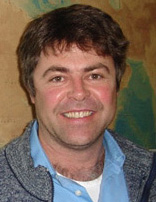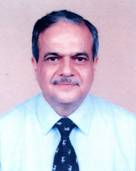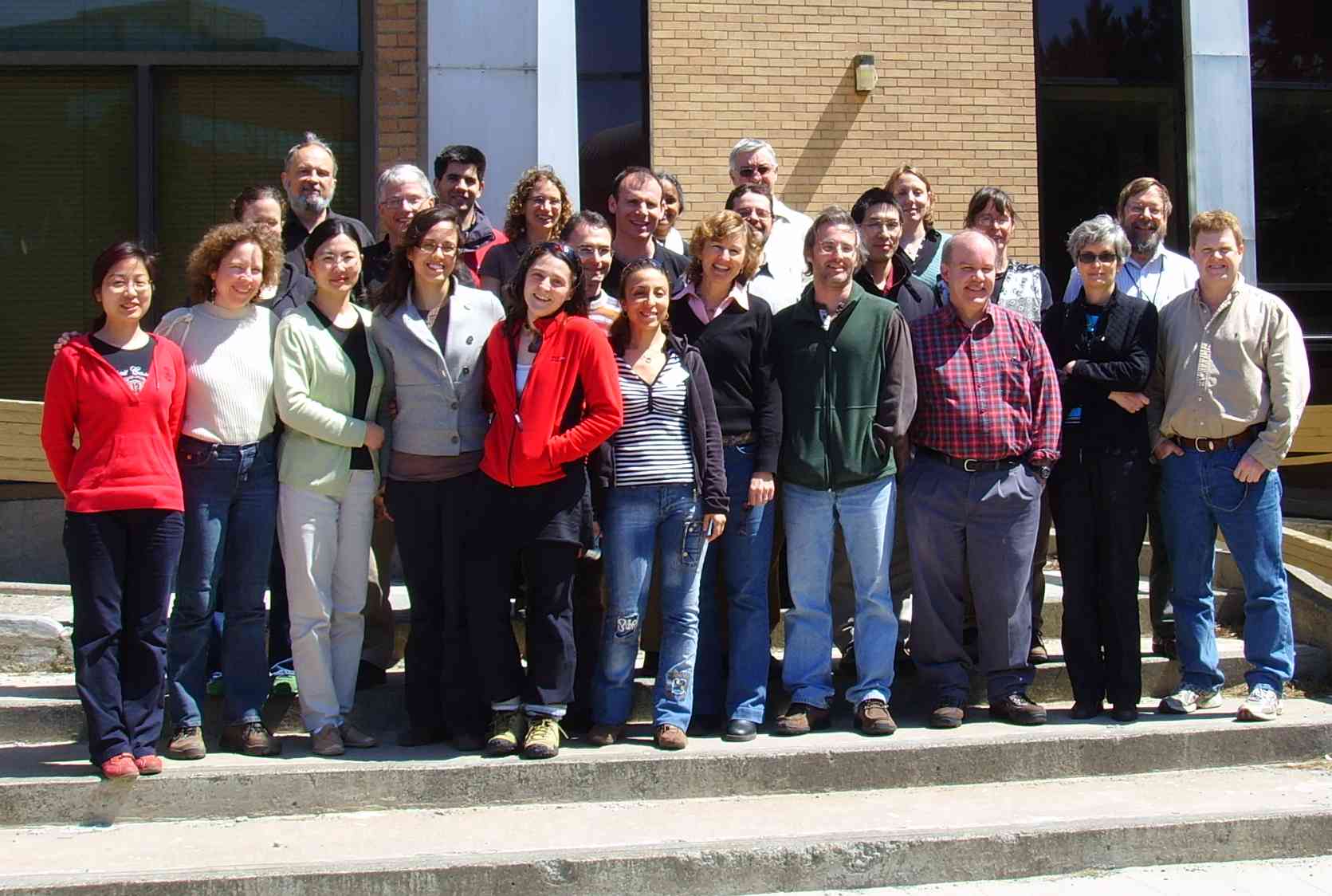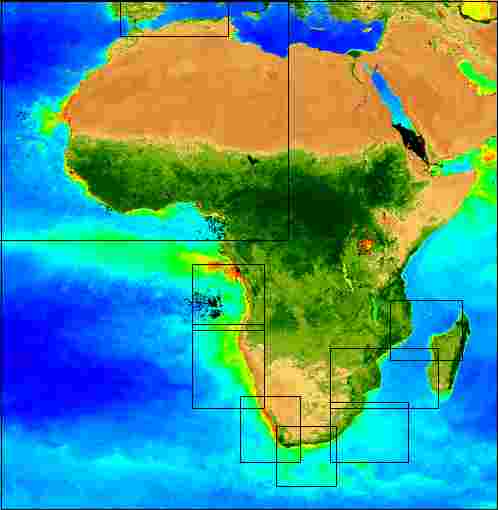

|
|
The minutes of the 12th IOCCG Committee meeting (16-18 January 2007, Swakopmund, Namibia) are now available at: http://www.ioccg.org/reports_ioccg.html#Minutes.
  Rangnath Navalgund (right) The IOCCG Committee undergoes a regular 3-year rotation of scientific members. New IOCCG members for the next 3-year period include Stewart Bernard (UCT, South Africa) serving as a scientific member for Africa, and Rangnath Navalgund representing the Indian Space Research Organisation (ISRO) on the Executive Committee. David Antoine (LOV, France) was invited to serve a second 3-year term. We would like to extend a warm welcome to the new IOCCG Committee members and look forward to their participation in the years ahead.
 The Canadian Space Agency (CSA) was the major sponsor of a highly successful IOCCG ocean-colour training course on “Analysis and Applications of Satellite-derived Ocean-Colour Data”, which took place in St. John's, Newfoundland, Canada (7-11 May 2007). The course was organised and cooordinated by the IOCCG in conjunction with Memorial University and DFO Northwest Altantic Fisheries Centre, and was also supported by POGO. The IOCCG would like to express their gratitude to Memorial University for use of their excellent computing facilities, as well as the outstanding support given by their computing personnel. A total of 19 students attended the course: 16 from across Canada and 3 international students (from China, France, Portugal). The course consisted of lectures by specialists, hands-on practical sessions in the analysis of satellite data using SeaDAS, and small projects executed by the participants, providing an overview of remote sensing of ocean colour. Many of the ocean-colour applications demonstrated were relevant to the waters off Newfoundland. Student presentations at the end of the course indicated that they had gained much valuable experience in the areas of atmospheric correction, inversion of IOP's, calculation of primary production as well as advanced processing of ocean-colour data. See the Training and Education section of the IOCCG website for a comprehensive report of the training course.
All subscribers to the IOCCG Mailing List should have received a copy of the report, via surface mail. A PDF version of the report is available on the IOCCG website and hard copies of the report can be requested online.
IOCCG Committee member, Dr. Roland Doerffer (GKSS, Germany), has spent many hours over the past two years producing an educational DVD entitled “The Science of Ocean Colour”, to help promote ocean colour research. We are very pleased to announce that his DVD was recently accepted for geOmovie 2007 - the 3rd International Media Festival for the Earth Sciences, which took place in Göttingen, Germany, 15-16 May 2007. Using a mixture of live footage and animation, the DVD introduces the science behind ocean-colour images and explains the fundamental processes of light in the sea, models of scattering functions, how light is measured and how it is used for remote sensing. In addition, the protocols for on board bio-optical measurements and underwater instruments are visualized, and topics such as atmospheric correction and the basic principles of ocean-colour algorithms are addressed. We extend our congratulations to Dr. Doerffer and hope to be able to provide a link to his DVD in the near future.
 The Chlorophyll Global Integrated Network (ChlorOGIN) is a GOOS/GEO demonstration project that will provide users with near-real time and archived measurements of remotely sensed and in situ ocean-colour products and SST using both satellite and in situ platforms. The project was initiated following recommendations of the Plymouth Chlorophyll Meeting and Workshops (Extended Antares Network) sponsored by GOOS, GEO, IOCCG, PML and POGO (18 - 22 Sept 2006). The first, pragmatic implementation of the ChlorOGIN-Africa project was undertaken by the Plymouth Marine Laboratory (PML, U.K.), the Joint Research Centre (JRC, Italy) and the University of Cape Town (UCT, South Africa) in the form of the ChlorOGIN Africa portal hosted by PML and linked to existing RS servers providing products for Kenya and Tanzania (PML), the rest of southern Africa (UCT), and other African countries (JRC). The portal was inspired by the Antares network, initiated after an IOCCG-sponsored workshop in Mar Del Plata (July 2003), which provides satellite coverage over South America. A more complete and integrated implementation will take place from 2007 onwards, which will aim to use Web Map Server/Web Feature Server architecture to provide more sophisticated dissemination systems, e.g. building upon the JRC’s African Marine Information System. The ChlorOGIN-Africa system will ultimately be both a powerful and approachable regional ocean observing system. A primary focus of ChlorOGIN-Africa is sustainable capacity development, and the project seeks to foster an integrated development environment through synergy with LME structures and other African marine research and development projects.
|
More than 900 scientists from around the world gathered in Montreux, Switzerland, for the 2007 Envisat Symposium (23-27 April 2007) to review their findings on the state of our world's land, oceans, ice and atmosphere. During the course of the week, presentations were given of ongoing research activities in many areas of Earth Observation including climate change and oceanography. Special sessions were dedicated to MERIS (Performance, New Algorithms and Products), Coastal Zones, Ocean Colour and Understanding and Monitoring the Global Environment, which included an update on the GlobColour initiative (to developing a merged global ocean colour data set for carbon-cycle research). In addition the conference included a special session dedicated to the joint ESA/European Commission Global Monitoring for Environment and Security (GMES) programme, including the GMES space component, Sentinel missions and contributions from national missions.
ESA was also in the news recently for presenting the sharpest ever satellite map of Earth produced as part of the ESA-initiated GlobCover project. Around 40 terabytes of imagery from the MERIS sensor were acquired between December 2004 and June 2006 and processed to generate the global composites. See http://www.esa.int/esaCP/SEMZ76V681F_index_0.html for further details.
China successfully launched its second oceanic survey satellite ""Haiyang-1B" from the Taiyuan Satellite Launching Center on April 11, 2007. HY-1B will be used to monitor ocean colour and sea surface temperature and will aid China's development and utilization of oceanic resources as well as monitoring and prevention of oceanic pollution, the development of coastal areas and the study of global environmental changes. Haiyang-1B has an operational life of 3 years and is an upgraded version of an earlier model (Haiyang-1A), which operated from May 2002 to April 2004.
The first images from HY-1B were received at the data collection center in Beijing on 20 April 2007, indicating that the satellite was in good condition and functioning well. China plans to develop five more oceanic satellites in the near future. The Haiyang-2 satellite, or ocean dynamic environment satellite, will be launched in 2009 and demands for the Haiyang-3 satellite, or ocean surveillance satellite, are currently being analyzed.

Three new ocean optical products have recently been added to Ocean Colour Giovanni from the Garver-Siegel-Maritorena (GSM) ocean optical model: merged chlorophyll, dissolved and detrital organic matter absorption coefficient at 443 nm [acdm(443)], and particulate backscattering coefficient at 443 nm [bbp(443)]. All three data products are available in the merged SeaWiFS/MODIS-Aqua interface; acdm(443) and bbp(443) are also available separately for SeaWiFS and MODIS-Aqua. Currently, the monthly data products are available in Giovanni - the daily data products may be added sometime in the future. The new Science Focus! Article entitled " A very Cold Warm-Core Eddy in the Southern Ocean", demonstrates some of Ocean Color Giovanni’s capabilities.
The NASA Ocean Biology Processing Group (OBPG) has developed the NOMAD data set (NASA bio-Optical Marine Algorithm Data set) to facilitate bio-optical algorithm development and satellite data product validation activities. The data are publicly available for research and educational use. In response to a request by the IOCCG Working Group on Phytoplankton Functional Types, NOMAD now includes near-surface concentrations of over twenty high performance liquid chromatography (HPLC)-derived phytoplankton pigments. This will provide a very useful tool for the PFT working group to evaluate their algorithms, and for other scientists interested in algorithm development. A big thanks to the OBPG on behalf of the IOCCG for providing this great service. In addition, ~300 NOMAD stations also include coincident SeaWiFS remote-sensing reflectances. Both subsets are available to the public and distributed via http://seabass.gsfc.nasa.gov/cgi-bin/nomad.cgi. All users of NOMAD are requested to acknowledge both the individual data contributors and SeaBASS. The following manuscript describes the development of NOMAD, and should be cited when using NOMAD data: Werdell, P.J. and Bailey, S.W. (2005). An improved in-situ bio-optical data set for ocean color algorithm development and satellite data product validation. Remote Sensing of Environment, 98: 122-140. A pre-print is also available in PDF format.
NASA's Ocean Color Research Team Meeting took place from 11-13 April 2007 in Seattle, Washington, USA. IOCCG Chairman, Dr. James Yoder, led an IOCCG Town Hall session to review recent activities and solicit feedback from the user community on emerging needs and priorities related to ocean-colour observations. He informed participants about the activities of the various IOCCG working groups that are underway, as well as those that are about to be formed, and also introduced the concept of “CEOS Constellations" which can be used as a potential means to better address space-based Earth observation needs on a global basis, without eroding the independence of individual agencies. Plans are underway for the IOCCG to submit a proposal to CEOS for an Ocean-Colour Constellation.. Dr. Yoder also raised the issue of a new name for the general area of ocean-colour research, and proposed the term "Ocean-Colour Radiometry" (OCR), which would have standard radiance units (W m-2 sr-1mm-1). The term was favourably received by participants because of it's heritage and broad association with ocean colour. It has the advantage of being brief, it is clearly quantifiable, and is a good descriptor of what we do. The IOCCG would like to encourage researchers to employ the term OCR in future publications.
|
|
|
Material for possible inclusion in the IOCCG Newsletter should be submitted to the Project Scientist. Subscription to the IOCCG Mailing List.Participants receive a brief summary of the IOCCG Newsletter by e-mail (quarterly), as well as hard copies of IOCCG Reports as, and when, they become available.
|
|
|